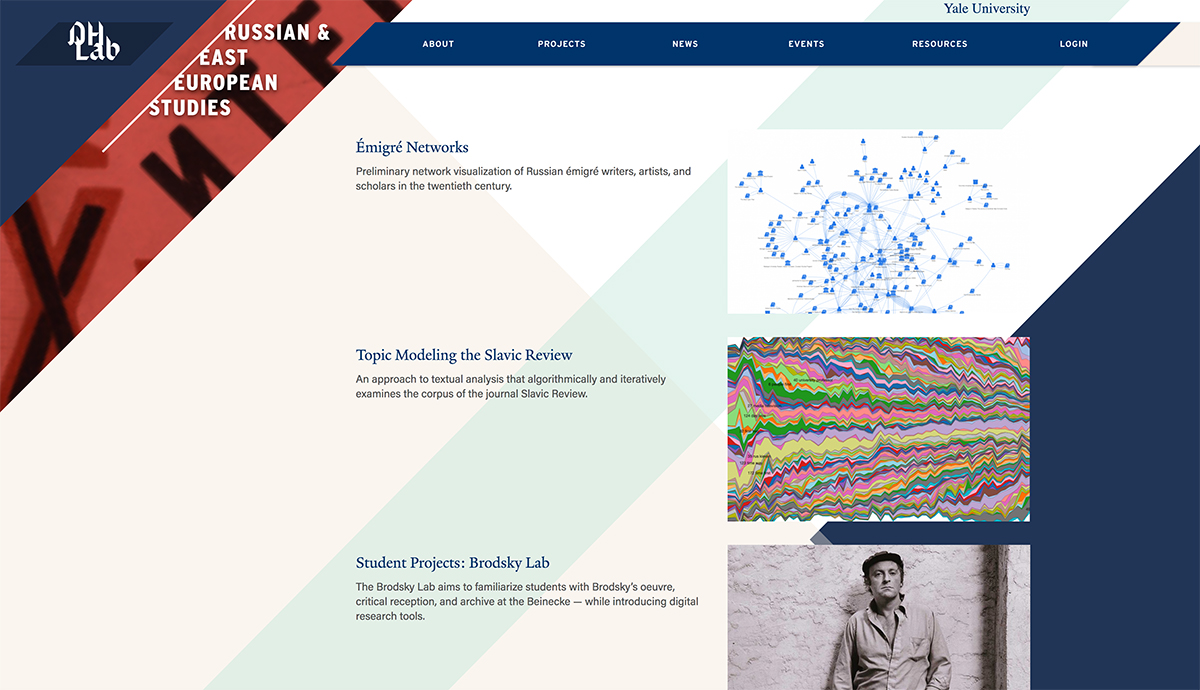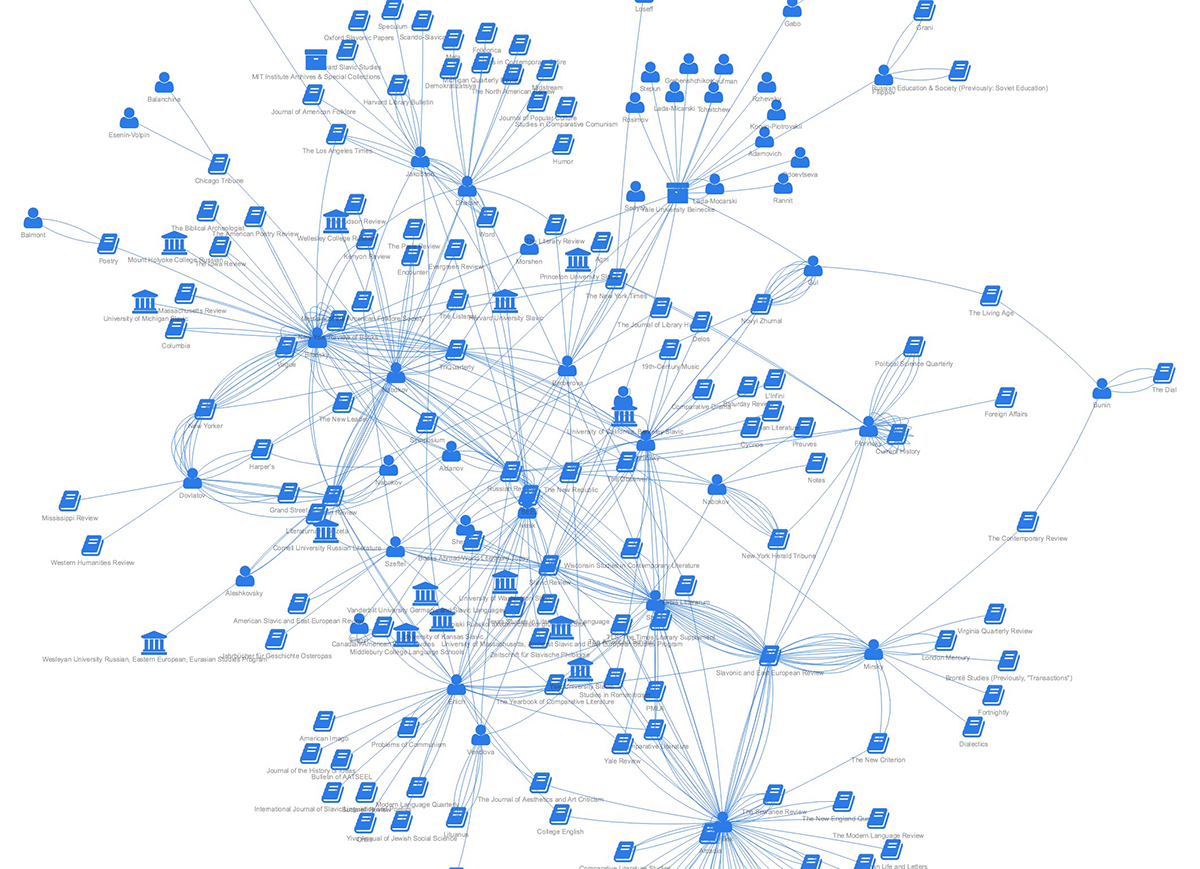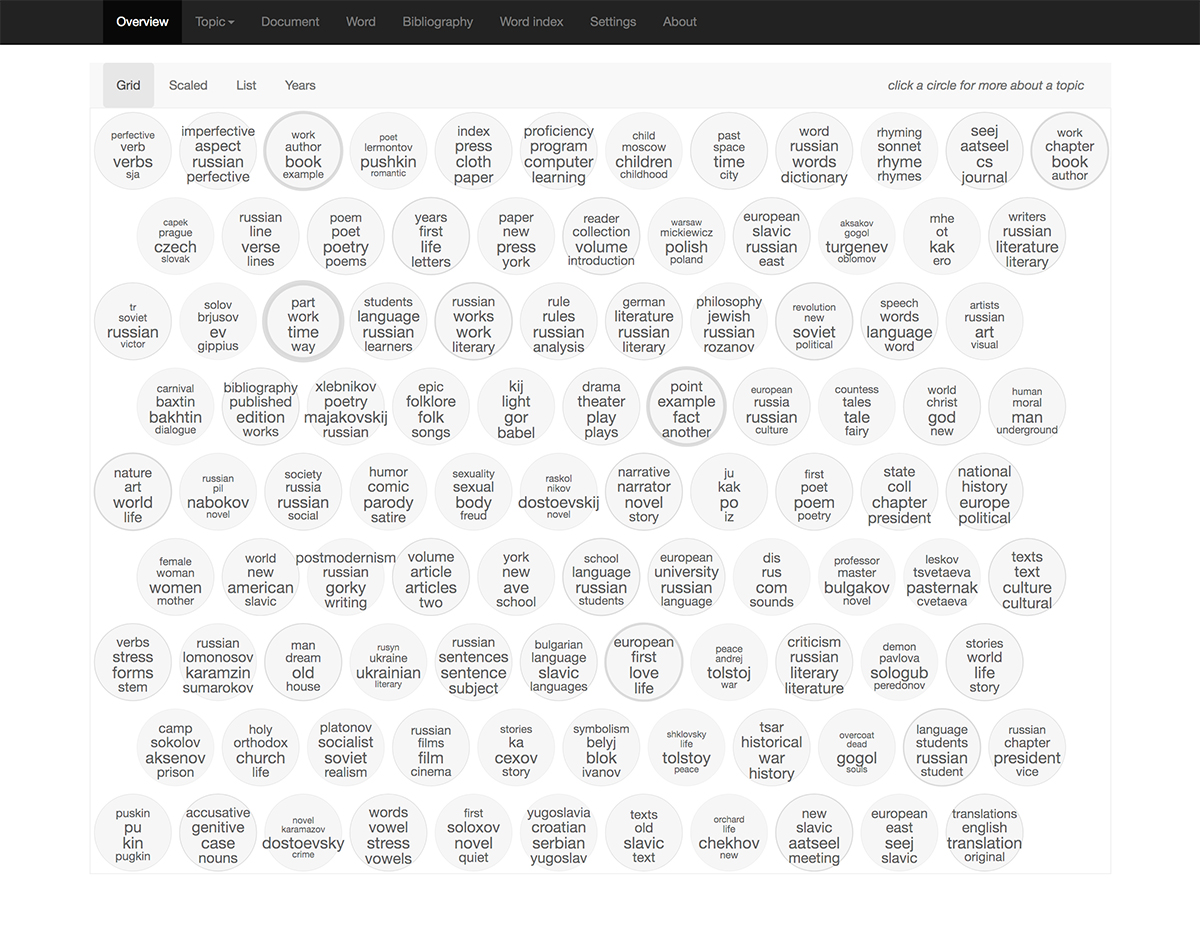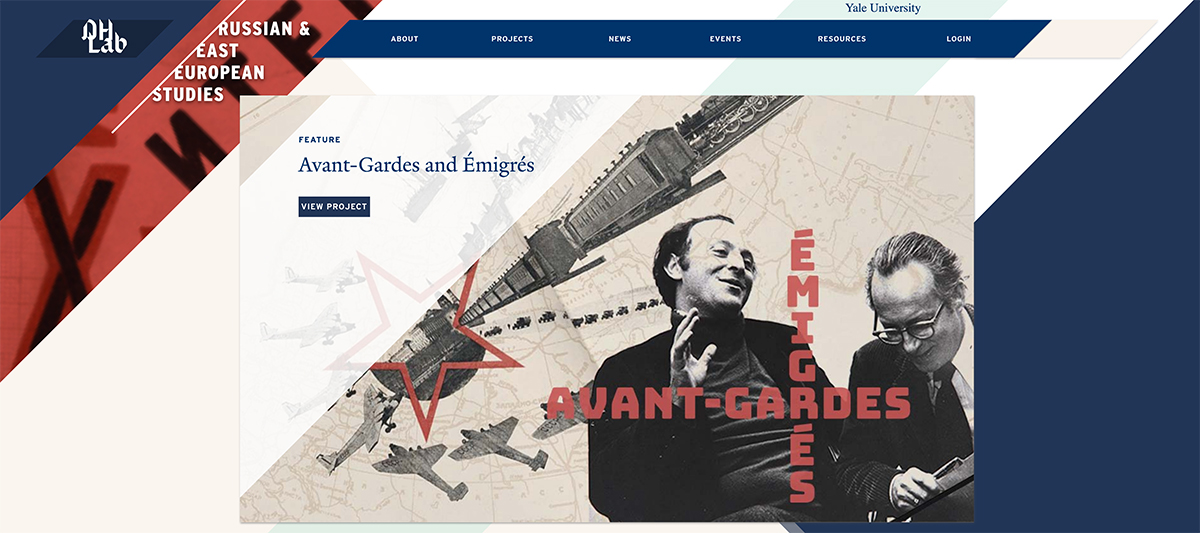Read, hot & digitized: Librarians and the digital scholarship they love — In this new series, librarians from UTL’s Arts, Humanities and Global Studies Engagement Team briefly present, explore and critique existing examples of digital scholarship. Our hope is that these monthly reviews will inspire critical reflection of and future creative contributions to the growing fields of digital scholarship.

Avant-Gardes and Émigrés: Digital Humanities and Slavic Studies, based at Yale University, is a project that aims to develop a research initiative and prototype online environment dedicated to the study of Russian and East European avant-gardists and émigrés in the twentieth century. The project takes a number of different approaches, including topic modeling and network mapping, to explore the networks of avant-garde artists from the former Soviet Union.
One of the project’s goals is to reveal how North American academic departments in Slavic Studies have been shaped by emigration patterns of artists and intellectuals from Eastern Europe. The project uses varied approaches to explore how avant-gardists and émigrés shaped the reading practices, archival and library collections, and institutional formations of Slavic Studies as a field, and the intellectual landscape of American academia more broadly. The project also looks at how ideas from the Soviet Union influenced the dynamics of American culture during the Cold War through institutions, academic practices, theoretical approaches and methodologies, and cultural forums.

One of the project’s features is an interactive network map connecting émigré writers with publications and places they influenced. You can zoom in on specific regions of the map, click and drag individual elements, and click on particular nodes to see the network that the writer was connected with. The network map features universities’ departments, individual figures, and various publications, and provides an easy-to-use, visual overview of networks that would otherwise be difficult to describe.

A section of the project based around topic modeling is currently still in development, with the beta version available for viewing online. A topic model is a type of statistical model for discovering the abstract topics that occur in a collection of document, and draws from the fields of machine learning and natural language processing. The main section of this project is focused on topic modelling the Slavic Review, a major journal devoted to the study of Eastern Europe, Russia, the Caucasus, and Central Asia, but the site also features preliminary topic modeling of the Slavic & East European Journal and the Russian Review. The topic models allow users to navigate words from the publications that have been analyzed, and clicking on individual words brings up additional information about where the words show up in individual documents within their respective corpus.
The project serves as an important contribution to digital scholarship in the Slavic Studies field. Its varied approaches to visualizing and analyzing the networks it seeks to foreground provides a valuable and accessible window into these networks, making them visible in a way that is only possible through digital methodologies. I highly recommend looking through the other aspects of the project I didn’t cover, including the student contributions from the Brodsky Lab and Avant-Gardes and Emigres Digital Humanities Lab, to explore the subject matter more in-depth. I would also recommend looking through related materials in the UT Austin Libraries’ collections, including our holdings of the Slavic Review both online and in print.

